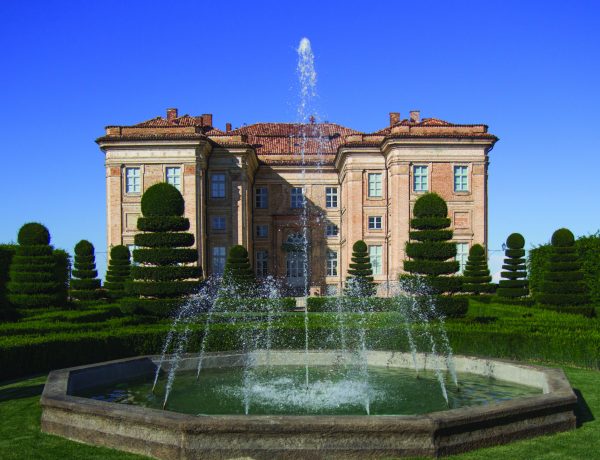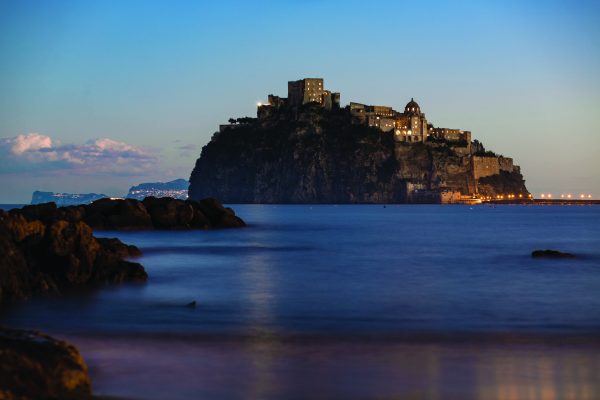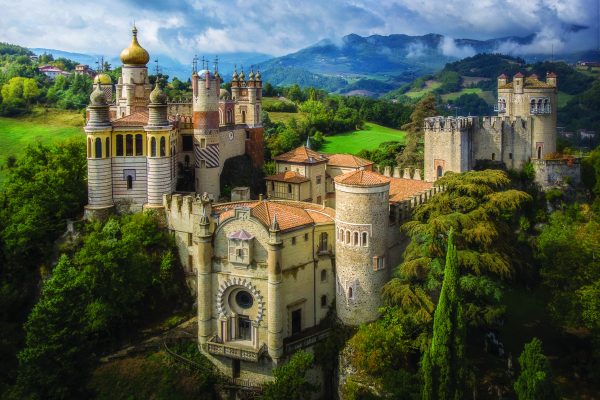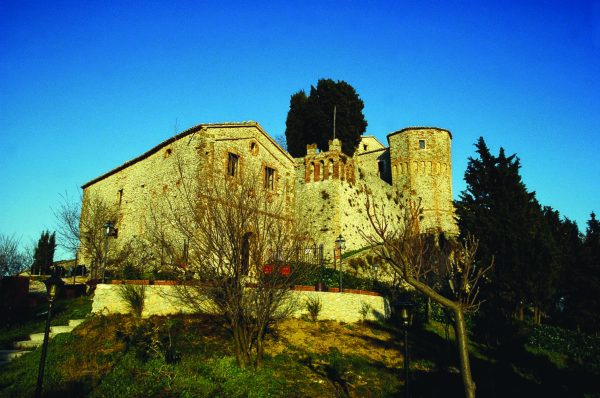We’ve rounded up some of our favourite Italian castles, so if you’re looking for a memorable day out or a place to stay that’s oozing with history, you’ll find the perfect destination here, says Jenny Oldaker.

Italy is so liberally sprinkled with castles, it’s difficult to choose just a few favourites. From solid medieval stone affairs to elegant 19th-century palaces, the nation has a dizzyingly diverse collection of castelli, many of which offer a palpable sense of their region’s unique history and culture. In this feature, however, we’ve risen to the challenge and combed the country to bring you a smattering of the very best castles to visit today (and a few that you can stay in!). Today these fortifications offer wide-ranging reasons to stop by, so whether you fancy soaking up the atmosphere and views, basking in the cultural heritage or enjoying produce from the local vines, one of these places is certain to enhance your next trip to Italy. And if you really love Italian castles, turn the page for options that are available to buy, so you can live the dream like true royalty.
1. For a luxe stay…
In medieval times a fortress stood on this site, but the imposing 18th-century structure you’ll see today was designed by local nobleman Carlo Giacinto Roero, who laid the first stone in 1726. The residence was built for his family but these days it is a top-class hotel and a perfect location for anyone seeking a special stay in Piedmont. The place still sings with traces of its past, from the antique-styled bedrooms named after figures from the palace’s history to the library filled with old books and the works of art dotted around the place. At the same time Castello di Guarene also enjoys every modern comfort, with a haute cuisine restaurant, salubrious wellness centre and top appliances in the hotel’s luxurious rooms. Carlo Giacinto Roero would be proud! Rooms from €350 per night in low season.
2. For beautiful gardens…
Castel Trauttmansdorff in Merano is an architectural treasure of northern Italy, first documented in 1300 and today home of the ‘Touriseum’ – the South Tyrol Museum of Tourism, filled with exhibits and interactive displays dedicated to the history of tourism. However, the splendid castle is not the most famous attraction here: this grand structure instead acts as an elegant centrepiece to the surrounding gardens. The botanical garden here covers more than 12 hectares; an extraordinary place that encompasses more than 80 diverse garden landscapes with plants from around the world. The gardens at Trauttmansdorff are one of the region’s most visited attractions and it’s easy to see why – alongside the castle and museum, this beautiful place has something for everyone. Adult ticket €15, valid for gardens and Touriseum.
3. For a city fortification…
If you’re ready for a break from Milan’s shopping and aperitivi, a visit to Sforza Castle is a must. There has been a castle on this site since the 14th century, but the existing structure was built by Francesco Sforza, Duke of Milan, in the 15th century, with later additions making it the imposing building we see today. Aside from the obvious architectural and historic appeal of the castle, it has diversified in recent years and is now home to several important museums, which include works by Michelangelo, Bellini and Lippi. The adjacent Parco Sempione is a pretty place to stroll after you’ve explored the castle. Adult ticket from €5.

4. For an island fortress…
Looming dramatically out of the ocean on a craggy islet of rock, Ischia’s Aragonese Castle is a visually striking prospect from all angles. The castle was originally built in 474 BC by Hiero I of Syracuse, though its name comes from its influential 15th-century occupant, Alfonso of Aragón. During his time here Alfonso gave the structure a thorough makeover, including adding the current causeway to the main island. Over the centuries Castello Aragonese has held many roles, from defensive fort to royal residence – and even a movie location, appearing in the 2019 film Men in Black: International and The Talented Mr Ripley (1999). Today it is open year-round for travellers, who come here in their droves to discover its rich history and enjoy its exquisite views. Adult ticket €12.
5. For an architectural magnificence…
Frederick II built several castles around southern Italy, but this one is widely considered to be his best, and has even achieved a UNESCO listing for “outstanding universal value in its formal perfection and its harmonious blending of cultural elements from northern Europe, the Muslim world and classical antiquity”. Completed in 1240, Castel del Monte was constructed according to strict geometric design, and the number eight features heavily, most obviously in the eight octagonal towers placed on each of the eight corners of the central structure. The positioning of the castle is also said to have been designed for the particular light and shade patterns of specific times of the year. Not only is the symmetry of the place aesthetically pleasing, its construction also offers up more questions about this masterpiece of building and the ideology that lay behind its design. Adult ticket €7.

6. For lakeside loveliness…
The Della Scala family (also known as the Scaligeri) ruled Verona and the wider area in the 13th and 14th centuries, and several of their castles still remain around northern Italy. Castello Scaligero at Sirmione on Lake Garda is one of the best preserved and most magnificent examples. It ticks all the boxes of a ‘classic’ castle, including drawbridge, moat, majestic towers and elegant battlements (in the distinctive ‘swallowtail’ style typical of the Scaligeri). Surrounded by water, the views from the top are worth the visit alone, and it’s easy to see how this romantic lakeside fortress has become a darling of social media and a magnet for travellers, drawn in their thousands each year to enjoy the castle’s history and aesthetic allure. Tickets €6.
7. For ghostly goings on…
The magnficient fortress of Montebello in Poggio Torriana, Emilia-Romagna, has a distinguished history and many interesting tales to tell, not least that of its resident ghost, ‘Azzurrina’. In the 14th century the castle’s feudal lord had a young daughter who had been born with albinism. To disguise the condition her parents dyed her hair black, but the colour didn’t take and resulted in pale blue tresses, giving her the nickname ‘Azzurrina’. On the day of the summer solstice 1375, the girl went missing in the castle’s basements and was never found. In the years since, strange activity and sounds have been reported every five years on the night of 21 June. Today visitors can explore the castle by day or book a night visit to explore the castle’s spookier side. Adult tickets €8, night visit €15.
8. For a right royal spa…
Imagine reclining in a warm salt-water pool beneath the stone walls of an ancient castle as shafts of sunlight beam gently down from high windows. At the castle on the 3,700 acre Reschio Estate in Umbria you can do just that. It was built in 1050 and sings with centuries of history, but is now a stylish hotel, with a quite wonderful bathhouse. The space was inspired by ancient Roman baths and is housed in the castle’s former wine cellars. It’s a cool, tranquil place, and alongside the salt-water pool you’ll find a hammam, sauna and treatment room where guests can enjoy bespoke massages and other therapies. A magnificent oval swimming pool sits temptingly in the grounds, while inside the hotel the rooms and suites are a joyful mixture of contemporary style and rich historic personality. Rooms from €790 per night.

9. For fairytale beauty…
The striking blend of Moorish and medieval Gothic styles showcased by Rocchetta Mattei castle in Emilia-Romagna gives it a wonderfully eclectic appearance. It is quite unlike any other castle in Italy and an utterly fascinating day out. Building began in 1850 for Count Cesare Mattei, an eccentric Italian nobleman who founded the practice of ‘electrohomeopathy’. Inside you’ll find winding staircases, impressive arches and a dazzling black and white chapel inspired by the Mosque of Córdoba, while the minarets, domes and turrets of the exterior bestow a dramatic fairytale charm. The whole place is testament to the count’s idiosyncrasies, resonating with stories of his life and his vision for the castle. Opened to the public in 2015 after a decade of restoration, it is well worth adding to your itinerary when you’re in this part of Italy. Entry €10. www. rocchetta-mattei.it 9 For fairytale beauty… Moorish infl uences abound Castello di Poggio alle Mura THE COMPLEX of the majestic Castello di Poggio alle Mura in Montalcino, Tuscany, was largely developed between the 9th and 13th centuries, but its origins are thought to be even older. In 1983 it became part of the acclaimed Banfi vineyard estate – a grand centrepiece of the Castello Banfi Wine Resort – and was restored from a state of disrepair to its former splendour by the current owners. The Hotel di Borgo within the walls of the castello is a stylish, luxurious place for a break – especially for wine lovers. If you don’t have time for a stay, you can reserve a space on one of the estate’s wine tours, book a table at the on-site restaurants, Le Sala di Grappoli or La Taverna, where local fare is accompanied by Banfi wines, or visit the enoteca to taste and buy the estate’s wide selection of wines, and other local produce. Rooms from around €440 per night.
10. For fine wine…
The complex of the majestic Castello di Poggio alle Mura in Montalcino, Tuscany, was largely developed between the 9th and 13th centuries, but its origins are thought to be even older. In 1983 it became part of the acclaimed Banfi vineyard estate – a grand centrepiece of the Castello Banfi Wine Resort – and was restored from a state of disrepair to its former splendour by the current owners. The Hotel di Borgo within the walls of the castello is a stylish, luxurious place for a break – especially for wine lovers. If you don’t have time for a stay, you can reserve a space on one of the estate’s wine tours, book a table at the on-site restaurants, Le Sala di Grappoli or La Taverna, where local fare is accompanied by Banfi wines, or visit the enoteca to taste and buy the estate’s wide selection of wines, and other local produce. Rooms from around €440 per night.
